
I present my children on Instagram like they live in a fairytale – could it damage them?
Freshly cut roses. Sumptuous Marie Antoinette-style birthday cakes. Vintage Liberty dresses in Strawberry Thief fabric. Shetland ponies. These are some of the ingredients of my Instagram posts featuring my kids. I wouldn’t call myself a “sharent” by any means – someone who overshares their children’s intimate lives on social media in one long, parental “humblebrag”. But whenever I do post, it is picture-perfect. My kids look like they’ve walked straight out of a fairytale. But is it naff? Like tablescaping your kids? A form of digital narcissism? Is it, in its own unique way, a parental kind of “thirst trap”? To an extent, I’m luring others into a fantasy that doesn’t exist. I like to project a wonderfully idyllic life as a single mum... when quite frankly, it isn’t. It’s like when people try to woo their ex-partners back by posting shots of themselves half-naked and having the best time of their lives, despite crying into their pillow heartbroken all day and night. Some mums are professionals at posting perfect dreamy shots of their kids. Look no further than Carrie Johnson, Tamara Ecclestone, Stacey Solomon, and Kate and Rio Ferdinand. For celebrities and influencers, a picture-perfect ideal is the norm on social media – there are lots of cream interiors and matching Christmas jumpers. They might be promoting a homeware brand, or tagging a pram they got for free. Even when it’s tastefully done, like the former PM’s wife’s Instagram, it always gives the impression that motherhood is wondrous. That life is one big, happy Timotei advert. Even when celebrities try to be more candid, it doesn’t work. Mum-of-two Millie Mackintosh, formerly of Made in Chelsea, recently posted a “toddler tornado dump” on her Instagram. “I feel like it’s so easy to always share the nice, polished, life,” she wrote. “Well, today, I’m here to break that pattern.” The glimpse “into the delightful chaos” of Mackintosh’s maternal life included photos of a toothbrush and toothpaste on a bathroom basin, a bedroom littered with hair bows, and a make-up drawer with a few brown concealer stains on it. Really? Is that as bad as motherhood gets? For me, it’s simply more interesting to post magical rather than mundane shots. But why on earth do I want to present my kids as if they’re living in one long, tasteful pastel-coloured dream, where everything looks enchanting? No messy hair. No sleep deprivation. No kids bored out of their minds. I don’t require a filter, either – I’m already looking at life through rose-tinted spectacles, and expecting everyone else to do the same. But am I totally deluded? And, more than anything, could it be damaging to my children? Dr Charlotte Armitage, who is currently the duty-of-care psychologist on ITV’s Big Brother, has big concerns. “First of all, it’s impacting the relationship between the parent and a child because the relationship is contingent on the creation of these images and the number of likes that follow,” she says, adding that when you are “truly happy” with your situation, “you don’t tend to post perfect images”. It’s more important to ask ourselves the question of why we feel the need to present this kind of picture-perfect image of ourselves to the world. Is it because, in reality, we are discontented with our lives? Dr Charlotte Armitage, psychologist As parents, she continues, we are modelling behaviours to our children. “They learn by imitation – if mum is taking photos and seeking validation from likes, the child starts to become validated by these likes themselves and will develop an external focus of control; they will learn that validation comes from what others think of them. This is unhealthy because, throughout life, a child’s self-esteem and self-worth become based on what others think about them rather than how they feel about themselves.” The key, she says, is realising we shouldn’t use social media to fulfil our self-worth. “It’s more important to ask ourselves the question of why we feel the need to present this kind of picture-perfect image of ourselves to the world,” she says. “Is it because, in reality, we are discontented with our lives?” According to research, the average child today has had their image put on social media 1,300 times before the age of 13 – I can see this trajectory for my kids unless I put on the brakes. There are already widespread concerns over the data. In France, an anti-sharing bill continues to be discussed in the country’s senate, and parents could potentially be banned from sharing photos of their children on social media. It could also become mandatory for influencers to admit if a photo or video they posted was retouched or filtered. There is controversy over whether pictures of kids should even be posted online at all, as many are too young to even give permission. How will they feel about the spread of their image in the future? What happens if their identity is stolen – or worse, used by paedophiles? Does it promote a distorted reality of motherhood, compared with which other “normal” mums feel inadequate? And can it backfire on the parents when children’s rights in the digital era are not honoured? “Children tend to be frustrated or critical of the way their parents share images of them,” says Professor Sonia Livingstone, from the department of media and communications at the London School of Economics and Political Science. “Not because they are made to seem ‘perfect’ but because they can be embarrassed, even shamed, in the eyes of their peers. Meanwhile, parents feel hugely under pressure in many ways, both to be perfect parents and also because such images leave parents competing with each other and isolated in their own seemingly inadequate lives.” Dr Cosmo Duff Gordon is the founder of leading addictions clinic Start2Stop, and a psychologist in private practice at Chelsea Recovery Associates. He says that in his 20-year career as a psychologist, he’s “never had a parent sit in front of him and say ‘I’m addicted to Instagram,’” but that’s not because social media addiction doesn’t exist. He puts it largely down to “denial” – “not least since the use of social media can involve so many of the processes that usually characterise classic alcohol or drug addiction”. Denial being the number one culprit. “Obvious ones might be obsession, compulsion, capture of attentional focus and loss of control,” he says. “More subtly, social media use can involve the same sort of self-medication, or escape from reality, that addiction offers – and being a parent is hard. That’s why drifting into a fantasy land can be a relief from the daily grind of motherhood.” Parenting expert Hannah Keeley – aka “America’s #1 Mom Coach” – is more upbeat about mums posting potentially inauthentic photos of their kids. “The hardest truth to accept is that there are some mums who are actually professionalising motherhood to this level,” she says. “Not that they have achieved perfection, but they take pride in their performance as mums and use social media as a way to confirm that to themselves and boost their confidence to encourage their efforts. Should these mums also be obligated to ensure that all mums feel good about themselves, whether or not they have invested in their career to this level? Mums don’t have to be responsible for other mums’ perceptions.” After great debate and reflection, I’ve decided I’m happy with my Insta posts. They might be driven by my background, where my sister and I ran around in white nightdresses as if we had starring roles in Picnic at Hanging Rock. Or because I was conditioned to believe that how we look – even how thin we were – equalled self-worth. I’m not setting myself up to be a supermum. I don’t look at how many likes I get. It’s true that us mums also need to share our parenting experiences honestly, to let other mums know they are not alone. But for now, I’m not doing a U-turn – I’m just living the fairytale dream. Read More My daughter’s horsey hobby makes her happy, but our home now hums If poachers make the best gamekeepers, do siblings make the best babysitters? Mother’s song about how easy it is to be ‘such a good dad’ goes viral Will an adaptogen a day keep the doctor away this winter? Naomi Watts admits mid-thirties menopause felt like ‘the end of my worth’ Smoking causes 150 cancer cases every single day in UK, study finds
2023-11-20 14:53
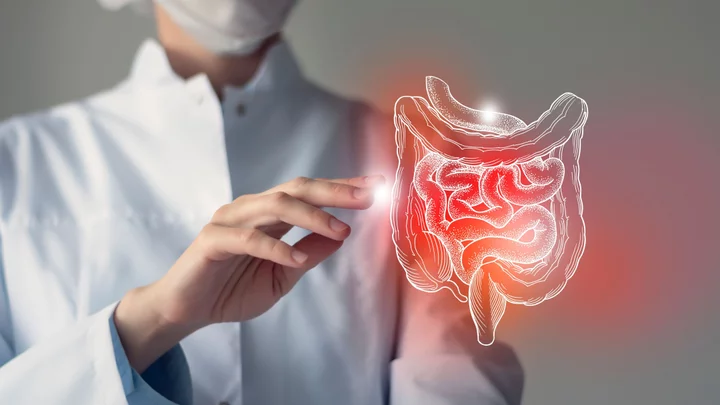
Researchers Create Ingestible Sensor That Monitors Heart Rate From the Gut
Researchers at MIT have created a ingestible capsule that will allow doctors to monitor your
2023-11-19 10:53

Here’s Everything Biden, Xi Agreed to at High-Stakes Summit
US President Joe Biden and Chinese leader Xi Jinping struck a series of agreements during high-stakes talks held
2023-11-18 03:27

Naomi Watts admits mid-thirties menopause felt like ‘the end of my worth’
Naomi Watts has admitted that going through menopause in her mid-thirties felt like “the end of her worth”. Watts, now 55, said she thought of menopause as “equating to the end” of her career, when she experienced it three years after her breakthrough performance in David Lynch’s 2001 psychological thriller Mulholland Drive. In an interview with Times Radio on Thursday, the two-time Oscar-nominated actor added that the lack of conversation around menopause – or the end of menstruation – “told me that you don’t matter anymore”. She continued: “So I kind of spent a lot of time spinning out and turning in on myself, feeling panicked about the end of my career, the end of my worth. If I can’t bring children into the world, my partner will probably leave me. What do I mean? Where’s my purpose?” Watts has been advocating for greater awareness and sensitivity around the subject, with the actor launching her own menopausal beauty brand Stripes last October. In the interview, she noted that, while women come together to discuss their periods, first kisses, or experiences with getting pregnant, the conversation around menopause has remained shrouded in secrecy and shame. However, Watts acknowledged that she wouldn’t have spoken about her own experiences when she was younger. Opening up about her decision to talk about going through early menopause publicly, she said: “Maybe it was just the right timing, maybe that the average age of menopause is 51. Maybe I just had to get past that milestone to actually admit that that was me. However, Watts added, her outlook has since changed because she “got on top of the education” and has a better understanding of it. “I’ve also got my friends,” she continued, underscoring the importance of having a community. “We can moan about it if we have to, laugh about it and share our experiences openly. “I think when the conversation is off the table, that’s the worst part of it,” Watts said. The Impossible actor has previously said that going through early menopause was “incredibly isolating”, with the NHS estimating that premature menopause – before the age of 40 – affects one per cent of women in the UK. The symptoms are the same as perimenopause, or the years of transition leading up to menopause. These usually include changes in the pattern and/or frequency of menstrual cycles, anxiety, mood changes, hot flushes, and hair loss or thinning. Read More ‘It was the most isolating experience’: Meet the women with early menopause Smoking causes 150 cancer cases every single day in UK, study finds Millions of women able to get contraceptive pills over the counter next year Smoking causes 150 cancer cases every single day in UK, study finds Millions of women able to get contraceptive pills over the counter next year Woman with cystic fibrosis had weeks to live – now she’s climbing mountains
2023-11-17 05:29
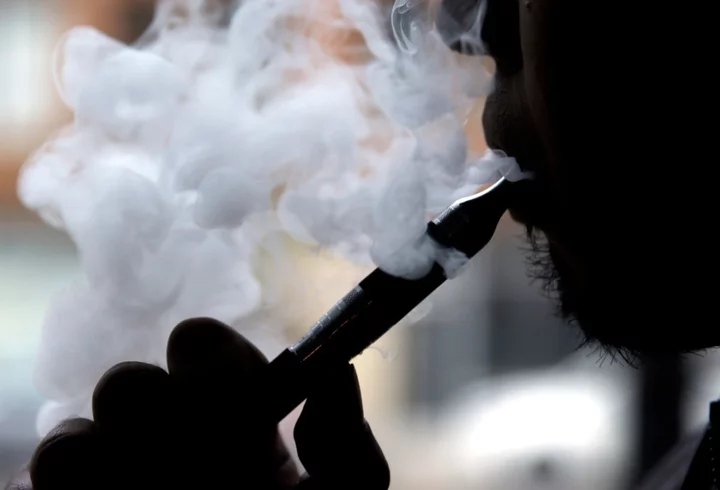
Smoking causes 150 cancer cases every single day in UK, study finds
Smoking causes 150 cancer cases every day in the UK alone, according to a new study. While tobacco smoking in the UK and US peaked to about 50 per cent in the 1950s, this had dropped to around 13 per cent in 2020-21 due to control efforts, said the study. However, historically high smoking rates are still a driving factor of the cancer burden in the countries today, it said. Very high-income countries like the UK are projected to see a 50 per cent increase in cancer cases over the next 50 years, said Cancer Research UK, that funded the study, on Wednesday. Researchers called on MPs to support raising the age of sale of tobacco products as a critical step to create the first ever smoke-free generation. “Action on tobacco would have the biggest impact – smoking causes 150 cases of cancer in the UK every single day,” said Ian Walker, executive director of policy and information at Cancer Research UK. “There are cost-effective tools at hand to prevent cases of cancer, which will save lives around the world. “Tobacco control measures are chronically underfunded. And as a recognised leader in global health, the UK government can play a significant role in addressing this,” Mr Walker said. The study also revealed at least 1.3 million people in seven countries die due to cancer caused by smoking tobacco. The deaths across the UK, US, Brazil, Russia, India, China and South Africa represent over half the world’s annual cancer death burden. The study analysed the years of life that were wasted to cancer. It also assessed whether certain risk factors caused deaths more prematurely. Researchers found four preventable risk factors resulted in almost two million deaths combined and over 30 million years of life lost each year. These factors are smoking, alcohol consumption, obesity and human papillomavirus (HPV) infections. At least 20.8 million years of life are lost from smoking tobacco alone, found the study. It also warned new cancer cases could surge by five times, from 0.6 million to 3.1 million per year in low-income countries over the next 50 years. “These numbers are staggering, and show that with action on a global scale, millions of lives could be saved from preventable cancers,” Mr Walker said. Researchers also found gender differences in the number of cancer deaths. Men were observed to have higher rates of years of life lost to smoking and drinking alcohol as these rates tend to be higher in men. In China, India and Russia, the rates of years of life lost to tobacco smoking and alcohol were up to nine times higher in men than women, found the study. The research was published in the journal eClinicalMedicine and involved the work of researchers from King’s College London and Queen Mary University of London. Read More Binman shoots first Hollywood film after chat with Mark Wahlberg changed his life UK’s tallest living Christmas tree lit up with 1,800 bulbs Morrisons Christmas ad features iconic 80s track and shares support for festive hosts The best foods to forage in November and how to cook them Millions of women able to get contraceptive pills over the counter next year Woman with cystic fibrosis had weeks to live – now she’s climbing mountains
2023-11-16 18:46
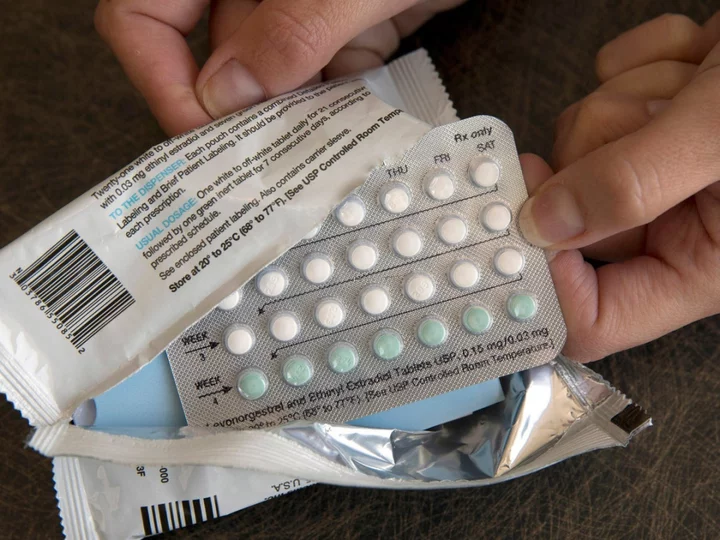
Millions of women able to get contraceptive pills over the counter next year
Millions of women will be able to get free contraceptive pills on the high street from next year without having to see a GP, under new plans revealed by the NHS. Starting next month, women in England can obtain a first prescription of the pill by visiting their local pharmacy. The change will give women greater choice over where to get the pill, and will free up 10 million appointments in GP surgeries, according to NHS England. The move has been hailed as a “step in the right direction” for patients and comes as part of a broader plan to allow patients to be treated for a range of conditions at local pharmacies. These conditions include sore throats and urinary tract infections. William Pett, the head of policy, public affairs and research at Healthwatch England, said: “Women across England will welcome the convenience of getting the contraceptive pill at a local pharmacy. “Being able to see your GP in a timely manner remains the public’s top concern. “If this initiative is effectively communicated and delivered, it will make a real difference to patients and relieve the pressure on hard-pressed services.” Mr Pett said there could be problems with the plan, though, such as pharmacists not being able to see a patient’s GP records, or differences in access between different areas of the country. The plan to make the pill available from pharmacies was piloted among a cohort of 4,500 women earlier this year. Under the scheme, if women opt for the combined oestrogen and progestogen pill, they will have a check-up with a pharmacist to record their blood pressure and weight. No checks are needed for the mini pill (progestogen only), which is also the case in other settings, NHS England said. Pharmacies need to sign up for the new service, meaning that it will not be available immediately everywhere in England. As more pharmacies join the scheme, the NHS web page will be updated so that women can check which locations offer the service. Women who are significantly overweight, or whose blood pressure is high – putting them at higher risk of blood clots on the combined pill – may be referred to their GP for further checks. The ongoing checks on blood pressure and weight that women need when they are on the pill will also be available in pharmacies. Funding has also been put in place to allow more pharmacies to offer repeat prescriptions of all types of contraceptive pill. NHS England said it expects almost half a million women to be able to access the pill next year without needing to contact their GP first, with the figure rising after that. Prescription figures for 2022-23 suggest there were almost 3 million prescriptions for the combined pill and more than 4 million for the mini pill. NHS chief executive Amanda Pritchard said of the plan: “This is really good news for women – we all lead increasingly busy lives, and thanks to this action, rather than making a GP appointment, they can simply pop into their local pharmacy when they need or want to access contraception. “We will also be expanding services so that more health checks are available for patients on the high street, which is not only better and easier for patients but also frees up NHS time for more GP appointments for those who need them most.” Under wider plans, pharmacists will be offering more blood pressure checks to patients who are at risk of high blood pressure, with a commitment to deliver 2.5 million a year by spring 2025. NHS England estimates that this could prevent more than 1,350 heart attacks and strokes in the first year. Dr Leyla Hannbeck, CEO of the Association of Independent Multiple Pharmacies, said: “This is a step in the right direction for patient care. The pharmacy network has the knowledge, skill sets and the willingness to deliver these services and support the NHS. For years we have been highlighting that, if supported appropriately, pharmacies can add a lot of value to the NHS. We are accessible and we have a track record of delivering for patients.” Victoria Atkins, the new health and social care secretary, said: “For the public, these changes will mean more options for women when making a choice about their preferred contraception, reduce the risks of people suffering heart attacks and strokes, and make it easier to access medicines for common conditions.” Janet Morrison, chief executive at Community Pharmacy England, said: “It makes perfect sense to use community pharmacies as a first port of call for healthcare advice, access to contraception, and health checks such as blood pressure tests.” Read More Stephen Fry uses walking stick after breaking his leg, pelvis and ‘a bunch of ribs’ Jonnie Irwin jokes he’s ‘whacked’ after attending The Streets gig in Newcastle Kourtney Kardashian ‘gives birth to first child’ with Travis Barker Stephen Fry uses walking stick after breaking his leg, pelvis and ‘a bunch of ribs’ Jonnie Irwin jokes he’s ‘whacked’ after attending The Streets gig in Newcastle Kourtney Kardashian ‘gives birth to first child’ with Travis Barker
2023-11-16 11:20
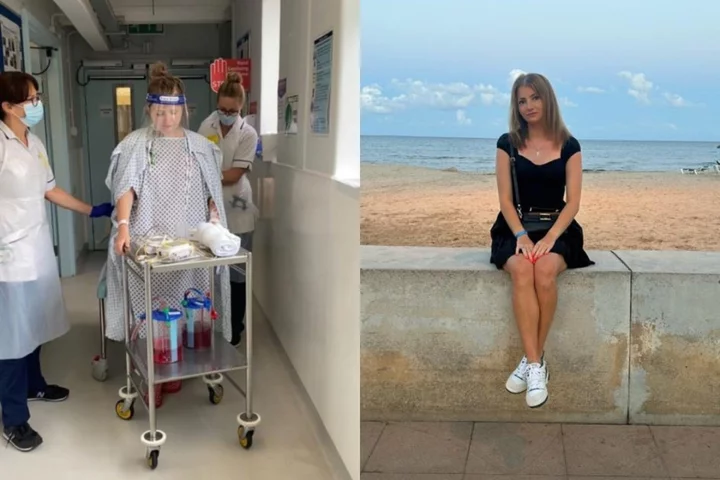
Woman with cystic fibrosis who had weeks to live before lungs transplant is now climbing mountains
A woman who felt she was being “suffocated” by her cystic fibrosis – and was told she had been just two weeks away from dying – has climbed Snowdon and run a half marathon after receiving two lungs from a transplant donor. Georgie Cooper, 26, was diagnosed with cystic fibrosis (CF) – a genetic condition which causes sticky mucus to build up in the lungs and digestive system – when she was two. The complaints and compliance officer, who lives in Essex, took medication and used nebulisers – machines which allow you to breathe in medicine – every day. She managed to maintain a “steady” lung function between 70 and 80 per cent until her health started deteriorating in her late teenage years. Cooper said 2018 was “the worst year” because she could not breathe properly and spent four months in and out of hospital as her lung function had dropped to 30 per cent and then to just 9 per cent. She was prescribed Orkambi, followed by Symkevi, to manage the condition. She was told she needed oxygen therapy 24 hours a day, which meant she had “tubes hanging out (her) nose”, and had to use a wheelchair. “It felt like constant suffocation, like I was being suffocated every minute, every second of every day.” Just two weeks before Christmas 2018, when she was 20, Cooper was told she had “a maximum of two years to live” and should consider a double lung transplant. While she waited for a donor, Cooper was prescribed Kaftrio to treat her CF, which she believes kept her alive. Her mother, Lesley, who she described as her “rock”, became her full-time carer and, after three false alarms, Cooper finally received the call that “we’ve got a set of lungs for you”. The surgery in June 2021, at Harefield Hospital in London, was successful – and came just in time. Cooper was told after the operation that her lungs had looked like “pulled pork” due to the CF damage, and she would have only lived for around two more weeks without the transplant. Before her surgery, Cooper had experienced three false alarms about suitable donors, and had started to believe that “to die would be peace”. During this time, she planned her funeral and created a “dream” bucket list – including going abroad again – to look forward to should she survive. She said she tried to stay positive as she knew she only had “a short time left on this Earth”, but found it extremely difficult knowing she was dying. “I had actually written my goodbye letters to my mum, dad, brother, my nan and pa, in case it didn’t work out, or in case I died before my transplant,” she said. She is incredibly grateful that the fourth call from the transplant service was a success. She describes her donor, who cannot be identified, as her “hero”. In August 2022, and after recovering, Cooper climbed Snowdon – now also known as Yr Wyddf and the highest mountain in Wales. She also completed the Bath Half Marathon in October 2023. “Snowdon, at that point, was my greatest achievement,” she said. “I felt like that’s the closest I’m going to get to my donor for now, which was really emotional. Someone else has selflessly given something of theirs to save another life – it’s incredible. She is the greatest hero that I never knew.” Cooper was born with no health complications, but soon developed a persistent cough, which raised alarm bells for her parents. After being referred to the Royal Brompton Hospital when she was two years old, she received her CF diagnosis and started taking medication and using nebulisers and having physiotherapy. While this was “normal” for Cooper, during secondary school she said she was “outed” as having CF during science lessons and her classmates and teachers discussed symptoms and life expectancy. According to the charity Cystic Fibrosis Trust, the median age of death of someone with CF in 2022 was 33. While Cooper was aware of the statistics, she said her peers at school would regularly say: “Oh you’re going to die soon, you haven’t got long left, have you?” Cooper says she cannot believe what she has overcome and achieved since the surgery, having also secured her first job as well as her running and mountain-climbing exploits. She now plans to climb Ben Nevis in Scotland – the highest mountain in the UK. While she still has to take immunosuppressants and struggles with survivor’s guilt, Georgie says she feels she has been “reborn” and now “lives for two people every day”. She was told her donor’s favourite quote was “your mountain is waiting”, which inspired her Snowdon adventure, and she wants to encourage others to “live every day like it’s your last”. She said: “Life is full of tablets, but I’m not having any physio, no nebulisers, and it’s like being reborn – it’s a life I’ve not known and I’m making up for lost time. I owe my life to my donor. She is my hero, she’s the greatest hero I never knew. It’s a gift of life, and that’s the best gift I’ll ever be given.” For more information and support, visit Cystic Fibrosis Trust’s website at: cysticfibrosis.org.uk. For more lung transplant information, visit: cysticfibrosis.org.uk/what-is-cystic-fibrosis/cystic-fibrosis-care/transplant-information-and-resources.
2023-11-15 19:57

Marlon Wayans reveals his child is transgender as he expresses ‘unconditional love’ for son
Marlon Wayans has revealed that his son is transgender. Now, the actor and producer is opening up about his own “transition” as the parent of a trans child. In an interview on The Breakfast Club on 10 November, the White Chicks star shared that his eldest child changed their name and pronouns. “I have a daughter that transitioned into a son,” the comedian said, adding that his child now goes by the name Kai. At first, Wayans admitted that his son’s transition was difficult for him to accept. However, he plans to focus on both Kai and the lessons he’s learned as a parent in an upcoming comedy special, tentatively titled Rainbow Child. “I talk about the transition, not their transition, but my transition as a parent going from ignorance and denial to complete unconditional love and acceptance,” Wayans said. “And I think there’s a lot of parents out there that need to have that message, and I know I’m dealing with it. It was a very painful situation for me.” The 51-year-old actor went on to praise Kai as “brilliant” but admitted that he’s “still working” on addressing his son by his correct pronouns. “They know I love them, they see me trying. They’re like: ‘I’m happy,’” Wayans said. “But I gotta respect their wishes.” He explained that his greatest wish for both of his children - including his 21-year-old son, Shawn - was to “be free” and confident in who they are. “I want them to be free in spirit, free in thought, free to be themselves,” Wayans said. “The more you know yourself, the more you can govern yourself. The more you live your truth, the happier your existence.” “I’m just so proud of them for being them,” he added. Wayans shares sons Kai and Shawn with his former partner, Angela Zackery. While the two were in a long-term relationship from 1992 to 2013, they were never married. The Air star has often shared glimpses into his life as a father of two on social media. Back in September 2022, Wayans celebrated National Son Day by posting throwback yearbook photos of both Kai and Shawn. “Happy #nationalsonday Shawn and Kai,” he captioned the amusing post. “I can’t believe y’all actually smiled like this for class pictures…The f***?! I told you it would come back to haunt y’all a**es.” In May, Wayans shared a birthday tribute for Kai by posting a sweet photo of him kissing Kai on the cheek after his graduation. In the caption, the comedian shared a special message to his transgender son, thanking him for “teaching me what [it] really means” to love unconditionally. “Happiest bday my baby… daddy loves you to the moon and back,” Wayans wrote. “I’ve always asked people to love me unconditionally, thank you for teaching me what that really means. Be you! Your best you! You’re the gift and I’m wrapping paper… love love love you for life. “Excuse my ignorance, chalk it up to growth. Love you so much, thank you for making me a man. So proud,” he added, alongside a rainbow emoji. Read More People crave comfort food more during the winter season - here’s why Gordon Ramsay’s daughters praise ‘rockstar’ mom after giving birth to sixth child Top 10 hacks to beat the afternoon slump People crave comfort food more during the winter season - here’s why Gordon Ramsay’s daughters praise ‘rockstar’ mom after giving birth to sixth child Top 10 hacks to beat the afternoon slump
2023-11-14 23:49
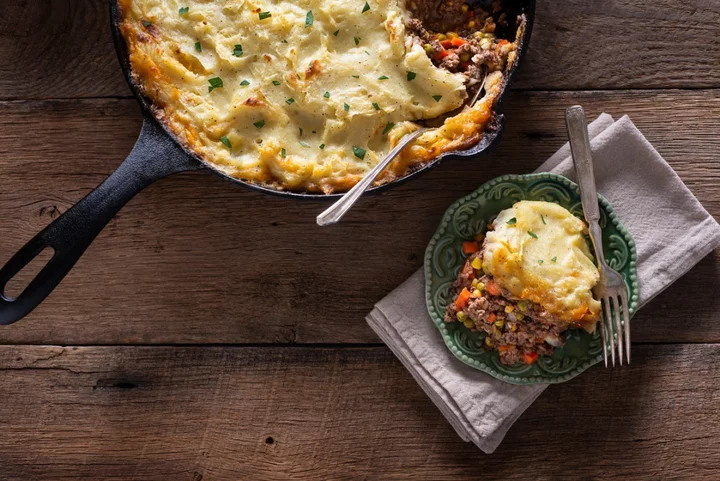
People crave comfort food more during the winter season
People will be spending 30 per cent longer in the kitchen this winter compared to the summer months – as they crave comfort foods to keep them warm. A study of 2,000 adults who cook at home found they anticipate spending 72 hours rustling up meals from December to February, but just 55 hours from June to August. And 40 per cent spend more time cooking in the cooler months than they do during any other season. Among the reasons for this upward trend are a craving for more hearty, comforting dishes (65 per cent), wanting to feel warm and cosy (42 per cent), and the kitchen being the warmest room in the house (32 per cent). It also emerged 51 per cent are concerned about the impact more time spent in the kitchen will have on their household bills. As a result, 79 per cent are keen to learn more energy-efficient recipes. The research was commissioned by Smart Energy GB, which has teamed up with Michelin-trained chef, Poppy O’Toole, dubbed TikTok’s ‘Potato Queen’, who has crafted a selection of energy-efficient recipes and hacks She said: “Winter is one of my favourite seasons when it comes to the wealth of hearty, comforting recipes you can create - especially if they include potatoes. “And when the weather is colder and the days shorter, what better way to spend time than cooking your favourite winter warmers? “These dishes can take more time and energy to make, which is why I’m excited to show it doesn’t always have to be this way. “I’ve developed a recipe range of energy efficient takes on classic favourites - all with the help of a smart meter.” The study also found 25 per cent of those with a smart meter plan to monitor their in-home display more carefully during the winter. Of those, 42 per cent are doing so because it gives them a greater sense of control over their household bills, while 40 per cent want to reduce their energy use when cooking. One in five of all adults are searching for more cost-saving cooking methods, and 77 per cent said being mindful about energy use when cooking is important to them. It also emerged the typical home cook will use their oven for the equivalent of nearly three days (64 hours) from December to February, and their hob for nearly two days (46 hours). This amounts to at least £18 in energy usage in the kitchen alone between December and February, according to data from Smart Energy GB and Energy Saving Trust. A traditional roast, shepherd’s pie and sausage and mash are among the most popular meals made when then temperature plummets. The study, conducted via OnePoll, also found 39 per cent are using more kitchen appliances in their cooking endeavours than ever before. The oven was voted the top winter appliance of choice (43 per cent), with the economical air fryer (27 per cent) also featuring in the top 10. Victoria Bacon, director at Smart Energy GB, said: “As we head into the colder, winter months where many people spend more time in the kitchen, small changes to the way we cook can make a tangible difference to the amount of energy that’s used. “Smart meters are installed at no extra cost by your energy supplier and come with a handy in-home display which allows you to track your usage in near-real time. “These warming recipes created by Poppy are the perfect thing to help households rustle up hearty dish, while keeping an eye on energy use.” Read More Watch live as gun salutes mark King Charles III’s 75th birthday Woman defends her $7,000 cheese board How to host a dinner party for under £2 per portion Man shows the increase in grocery prices since 2019 Starbucks customer reveals comical result of her request for half sandwich Waitrose Christmas advert features Graham Norton cameo at kid-free festive party
2023-11-14 20:23
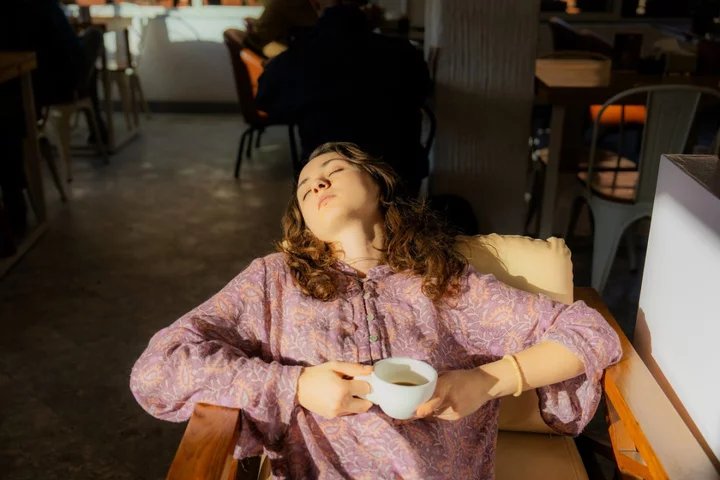
Top 10 hacks to beat the afternoon slump
An expert has revealed how to beat the afternoon slump, including chewing gum, having a ginger shot – and watching cute cat videos. Nutritionist and mental health advocate Rosie Millen, has revealed the top 10 hacks to get yourself out of the energy lull, which also includes grabbing a colouring in book, making a ‘slump’ playlist and spraying your favourite perfume. According to Rosie, watching heart-warming videos of cats can have a huge impact on your mood and energy levels, and also decreases stress. While studies show that simply chewing gum increases blood flow to the brain, which then makes you more alert. And drinking a shot of ginger – which is a natural energy booster – can also help you out of a slump. It comes after a study of 2,000 adults found they suffer an average of three energy slumps a day, with 2.36pm the most common time to hit the wall. But 49 per cent admitted they have no idea how to avoid the energy loss. ‘Lack of sleep was found to be the top cause of an energy slump’ Rosie, who is working with Vitabiotics Feroglobin in a bid to help people cope with the dreaded afternoon slump, said: “We’ve all been there. Some of us more than others. And when it hits, it hits hard. “We all know the obvious solutions on hand – exercise, have a cup coffee or take a nap. “But what are some of the more unconventional hacks at our fingertips that can also help bring you out of your energy lull and allow you to get on with your day.” Following the findings, a quiz has also been created to allow you to test how at risk of a slump you are, and whether you need to work to boost your energy levels. A lack of sleep was found to be the top cause of an energy slump for 45 per cent, followed by not drinking enough water (25 per cent), not exercising (22 per cent) and not having the right foods (21 per cent). But 19 per cent blamed it on having to complete a boring activity while 12 per cent suffer a slump when they are in a meeting that goes on for too long. Worryingly, 34 per cent have even had an energy slump while driving. As the result of the lull in their energy levels, 21 per cent have cried and 19 per cent have argued with their partner. Others admitted to cancelling a social engagement (19 per cent), forgetting they were meant to be somewhere (16 per cent) or shouting at their children (15 per cent). While 12 per cent have even fallen asleep in a meeting and 10 per cent have made a mistake at work. But in a bid to beat the slump, 37 per cent have turned to coffee while the same percentage has tried going for a walk outside. Three in 10 consume sugary snacks, 26 per cent splash their face with water and 12 per cent put some loud music on. It also emerged the average adult complains of feeling tired three times a day, with 39 per cent admitting their lack of energy is often a topic of conversation with friends. However, a quarter of those who suffer with energy slumps, polled via OnePoll, have been so concerned, they have visited a doctor or medical professional. To try and boost their energy levels and avoid a slump, 38 per cent have attempted to improve their sleeping pattern while 36 per cent have done more exercise. Others have changed their diet (30 per cent), taken supplements (30 per cent) or taken more breaks throughout the day (26 per cent). A spokesperson for Vitabiotics Feroglobin said: “We’ve all experienced an energy slump – and when it hits, it can be really hard to get out of it. “But as well as learning how to beat it, it’s important to learn how to avoid the slump in the first place. “Your diet and nutrition can have a huge impact on your energy levels, so making sure you are eating the right foods and getting the vitamins and minerals you need can go a long way to beating the slump.” Here are some top tips to beat the slump: 1) Watch cute cat videos Believe it or not, watching cat videos can have a profound effect on your mood and energy levels. A study from the Indiana University Media School of 7,000 people found that watching cat videos not only improves your mood but also decreases stress and re-energises you for when you return to your work. 2) Eat an iron rich snack You need iron to carry oxygen to the muscles and organs in the body. When iron levels are low, this can contribute to fatigue. So make sure you get some iron rich snacks every day to keep your levels up. Good recommendations include dried fruit and pumpkin seeds, dark chocolate and houmous with chopped veg. 3) Chew gum This semi-strange tip actually has science to back it up. A study from the journal of physiology and behaviour found that chewing gum increases blood flow to the brain which in turn improves alertness. 4) Grab a colouring in book Not only does colouring in alleviate stress and reduce anxiety it is like a full brain workout for your neurologic system. While colouring, you use the parts of your brain (the frontal lobe) that enhances focus and concentration. Certain colours, such as yellow and orange, are also thought to increase energy. 5) Jump into an ice bath or have a very cold shower Experts say that cold showers boost the immune system and increase energy levels. Scientists believe it improves circulation and blood flow to and from the muscles. It is also thought to improve your mood. A 2008 study found that the use of cold showers on a daily basis decreases depressive symptoms. 6) Make a playlist Music has an incredible impact on our mood and can absolutely transform your energy levels even in a short space of time. Just popping in your earphones and blasting your favourite song alters brainwaves and improves cognitive performance. New research from the British Academy of Sound Therapy found that after listening to music for just nine minutes, 65 per cent of test subjects reported they were happier and laughed more, 89 per cent had improved energy levels and 82 per cent felt more in control of their lives. So, get a playlist ready before you start to crash. 7) Turn up the lights If you’re feeling slumped turn up the lights in your house. The high colour temperature of bright and cool lights triggers the release of serotonin, which makes us more alert and energetic. Results of a study with 52 test subjects showed that people felt more alert and energized after having been exposed to bright light. Stepping out into the sunshine is also a gamechanger. The effects of vitamin D and energy are well documented. Fatigue is one of the main symptoms of vitamin D deficiency. 8) Spray your favourite perfume A lot of clinical research supports claims that certain essential oils increase energy and relieve fatigue. Peppermint oil, for example, is effective for preventing fatigue and improving exercise performance. And eucalyptus is thought to awaken the mind and increase mental clarity. You can either inhale essential oils directly, spray a perfume with them in, add a few drops to your shampoo or opt for an energising massage (time and finances permitting). 9) Call a friend Unsurprisingly, socialising with friends can be really lifting. Dopamine and oxytocin are released when you socialize which in turn boosts your mood, reduces cortisol levels and lowers stress. In fact, social isolation has more far-reaching negative effects. New research suggests that being alone for too long is comparable to smoking up to 15 cigarettes a day. 10) Have a ginger shot Ginger is a natural energy booster and may be able to give you the kick you are looking for mid-afternoon. Studies suggest it has stimulatory effects. Just make sure you go for as fresh as possible without any added sugar. Read More What are the symptoms of Parkinson's disease and how can it be treated? What is silent reflux? Yoga may reduce seizure frequency in epilepsy patients, scientists say Yoga may reduce seizure frequency in epilepsy patients, scientists say Jonnie Irwin says he ‘never thought’ he’d be alive to see his 50th birthday Billy Connolly shares health update on Parkinson’s disease: ‘Every day gets stranger’
2023-11-14 00:18
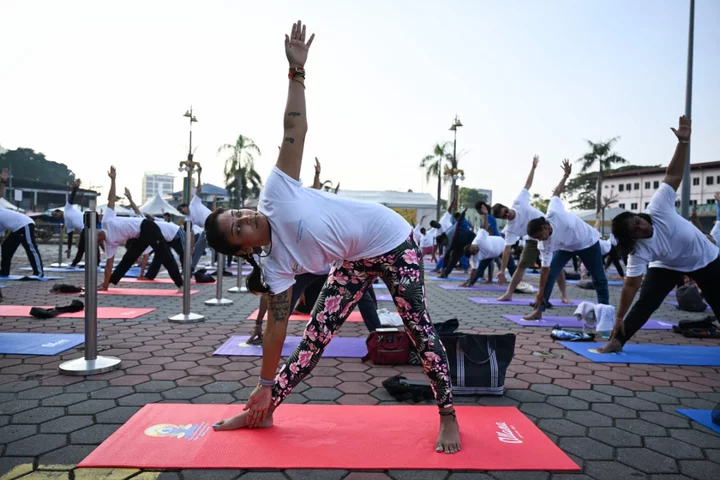
Yoga may reduce seizure frequency in epilepsy patients, scientists claim
Doing yoga may help reduce frequency of seizures in people with epilepsy and lower their anxiety, a new study found. The practice may also improve patients’ overall quality of life by reducing the stigma they feel from having the disease, according to the research, published last week in the medical journal Neurology. “People with epilepsy often face stigma that can cause them to feel different than others due to their own health condition and that can have a significant impact on their quality of life,” study author Manjari Tripathi from All India Institute of Medical Sciences (AIIMS) in New Delhi said. “This stigma can affect a person’s life in many ways including treatment, emergency department visits and poor mental health,” Dr Tripathi explained. In the study, researchers assessed people with epilepsy with an average age of 30 in India. They measured stigma among participants based on their answers to questions such as: “Do you feel other people discriminate against you?” “Do you feel you cannot contribute anything in society?” and “Do you feel different from other people?” About 160 people who met the criteria for experiencing stigma were then identified. These patients had an average of one seizure per week and on average took at least two anti-seizure medications, researchers said. One set of patients were then randomly assigned to receive yoga therapy, which included exercises in loosening muscles, breathing, meditation and positive affirmations. Another set of patients received a sham therapy that mimicked the same exercises, but these participants were not given instructions on two key components of yoga – slow and synchronized breathing, and attention to the body movements and sensations. Both the groups received seven supervised group sessions of 45 to 60 minutes over three months. They were also asked to practice sessions at home at least five times a week for 30 minutes and track their seizures and yoga sessions in a journal. Participants were then followed for an additional three months after their first three months of therapy. People who did yoga were more than four times as likely to have their seizure frequency more than halved after six months than the people who did sham yoga, the study found. Compared to those who did the sham practice, participants who did yoga were more likely to reduce their perceived stigma of the disease, researchers say. People who did yoga were also over seven times more likely to no longer have seizures than those who did the sham practice, according to the study. Researchers also reported a significant decrease in anxiety symptoms among those who did yoga versus people who did not. “The intervention group showed significant improvement in symptoms of anxiety, cognitive impairment, mindfulness and quality of life relative to the control group at the end of follow-up period,” researchers wrote. “Yoga may not only help reduce stigma, but also improve quality of life and mindfulness. Plus, yoga can be easily prerecorded and shared with patients online using minimal resources and costs,” Dr Tripathi said. Citing the main limitation of the study, researchers said the participants self-reported their seizure frequency and they may not have remembered all the information accurately. However, they say the findings “elevate the need to consider alternative therapies and activities for people with epilepsy facing stigma”. Read More Jonnie Irwin says he ‘never thought’ he’d be alive to see his 50th birthday Billy Connolly shares health update on Parkinson’s disease: ‘Every day gets stranger’ What are the symptoms of Parkinson's disease and how can it be treated? Jonnie Irwin says he ‘never thought’ he’d be alive to see his 50th birthday Billy Connolly shares health update on Parkinson’s disease: ‘Every day gets stranger’ What are the symptoms of Parkinson's disease and how can it be treated?
2023-11-13 12:53
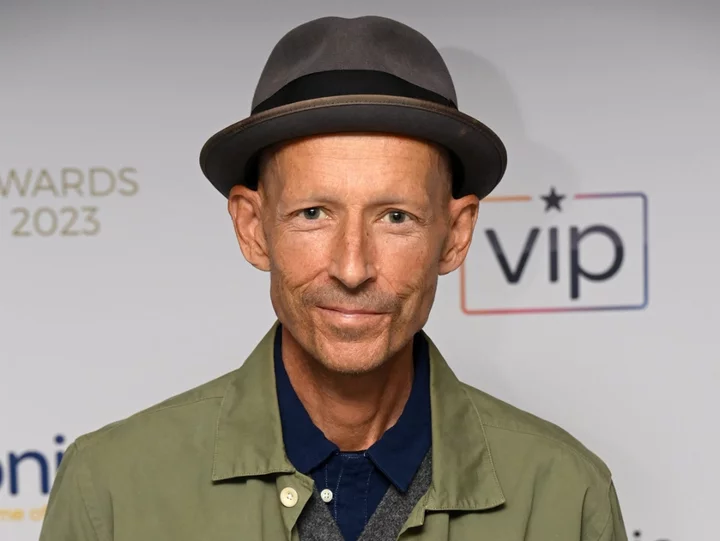
Jonnie Irwin says he ‘never thought’ he’d be alive to see his 50th birthday amid terminal cancer diagnosis
TV star Jonnie Irwin has admitted that he “never thought” he’d be alive to see his 50th birthday, which is next week. Irwin, 49, who is best known for presenting property TV shows A Place in the Sun and Escape to the Country, was diagnosed with terminal cancer in 2022. In January, Irwin threw an early 50th birthday party, ahead of the actual date next week, with a huge part with 170 friends and family. But in a new interview, the presenter has said he will be jetting off on holiday to Spain with his family for his actual birthday. “I never thought I’d be here,” Irwin told The Sun. “I’m really looking forward to some time with [wife] Jess and the boys.” Irwin shares three young sons with his wife, Jessica Holmes. He has been praised for his transparency about his condition, and his experiences with various cancer treatments. Since his diagnosis, Irwin has followed a strict diet and spends one to two hours a day in an O2Worx hyperbaric oxygen tent. Some studies have shown that flooding the body with oxygen does not promote tumour growth and has been linked to preventing cancer growth. In July this year, Irwin discussed his “really good” experience with palliative care, which focuses on improving the quality of life for anyone facing a life-threatening condition. Irwin said that he has been in palliative care since the day he received his terminal cancer diagnosis. He was first diagnosed with lung cancer in August 2020, but only publicly shared the news in November 2022 after the cancer spread to his brain. His hospice experience was a “delight”, Irwin said, challenging his initial perception that such facilities were “very much a boiling hot room full of people who looked frail and towards the end of their days”. In September, the presenter made his long-awaited return to TV when he hosted a new episode of Escape to the Country on BBC One. Looking back at his time in a hospice six months ago, Irwin said he was “on the cusp of death”. “Lying in the hospice, I thought I’d had it,” he told The Sun. ​​“But at my weakest point I thought, ‘This is it, this is the beginning of the end.’” ​​Irwin returned home and resumed his strict diet, drinking protein shakes and spending time in the oxygen tent to attempt to curb the growth of his cancer. “I won’t let cancer define me,” Irwin told the publication from his newly renovated home in Newcastle. “A friend of mine told me, ‘Your body achieves what your mind achieves’, and I want to live by that.” Read More Jonnie Irwin jokes he’s ‘whacked’ after attending The Streets gig in Newcastle Billy Connolly shares health update on Parkinson’s disease: ‘Every day gets stranger’ What are the symptoms of Parkinson's disease and how can it be treated? Billy Connolly shares health update on Parkinson’s disease: ‘Every day gets stranger’ What are the symptoms of Parkinson's disease and how can it be treated? Tracey Emin says she ‘totally accepted death’ following cancer diagnosis
2023-11-13 00:20
